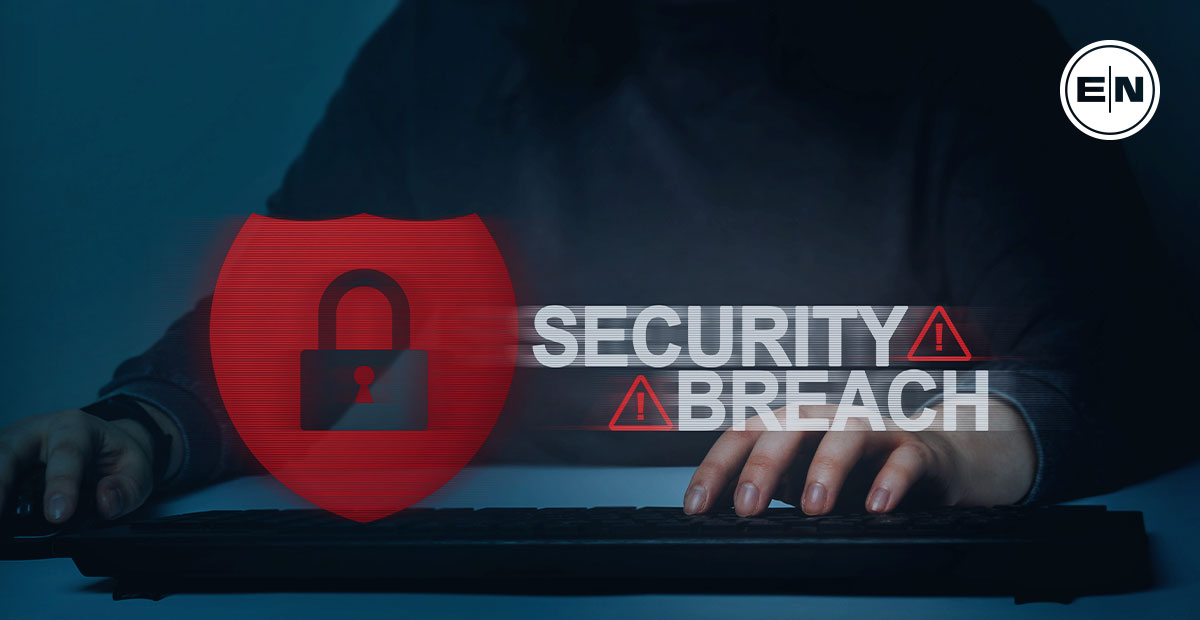What is a Security Breach?

What Is Security Breach?
A security breach occurs when a person or program gains unauthorized access to an organization’s systems – without permission. Cyberattacks by criminals or malicious spyware are both culprits when it comes to security breaches. They work to bypass systems, firewalls, and other protective measures to steal data and damage systems. This may be due to human error, malicious intent, or other causes. The term “security breach” can also refer to incidents involving physical theft and/or vandalism of computers, servers, storage media, etc. These are attacks that can occur on a massive scale – so it’s not just large businesses that are at risk!
Security Breach Meaning & Definition
A security breach occurs when someone gains access to sensitive information about customers, employees, vendors, partners, or other third parties. This could be through hacking, phishing, malware, or any number of other methods. The result is that the company’s reputation suffers, and the company may lose money or suffer legal consequences. In many cases, a security breach can lead to identity theft, which means your name, address, phone number, email address, and more are now available to criminals.
How Does a Security Breach Happen?
Security breaches occur because people make mistakes. People often forget their login credentials or fail to change them after they have been compromised. Others choose not to change their password even though it has been compromised. When this happens, hackers gain access to sensitive information stored on the network. They may also attempt to compromise the system itself in order to get at the information.
Why Should I Care If My Company Gets Hacked?
If your company gets hacked, it will likely affect its reputation. It could cause damage to your brand image and customer relationships. You may incur significant costs related to repairing the damage caused by the hack. And there’s always the possibility that your company could face legal action.
If Your Company Is Hacked, What Can You Do?
The first step is to determine whether you were affected by a security breach. If so, contact the appropriate authorities immediately. For example, if you suspect that your computer was infected with malware, call your local police department or FBI field office. If you believe that your employee account was breached, notify the Office of Personnel Management (OPM). OPM handles background checks for federal government employees.
Once you know who to contact, follow up with an official letter confirming that you notified the proper authority. Include all relevant details, including:
Who was affected?
How did the breach occur?
When did the breach occur?
What happened next?
Did anyone respond? Did anyone take corrective actions? How long did it take before you heard back?
Did you receive a response? What was it? Was it satisfactory? Why or why not?
Was anything done to prevent future attacks?
What would you like to see from the organization that responded?
You should also consider contacting your state attorney general’s office and/or consumer protection agency. These agencies may offer free assistance to help you recover damages and protect yourself against further attacks.
In addition to contacting law enforcement, you may want to report the incident to the Federal Trade Commission (FTC) and the Department of Homeland Security (DHS). Both organizations may provide resources to assist you in recovering losses and preventing future attacks.
Types of Security Breaches
Learning how to prevent a security breach means learning the different types of security breaches that can affect your business. These can include:
Ransomware Attacks
A ransomware attack occurs when someone encrypts all files on a computer system and then demands money for the decryption key. The best way to prevent such attacks is to keep software up to date and use strong passwords.
Malicious Software
Viruses, malware, and spyware are all things that most people have heard of. They are used to break into protected networks and find data, destroy the information, or take down a whole system. Malware is usually used via email and in embedded links; when the user clicks the link, the system fails and is infected.
Impersonation
Sometimes, cybercriminals use impersonation to create a gap in business security. They create a convincing email and send it to an employee with a link for data, login information, and even business records. It looks innocent enough, so the employee will click on the link and unwittingly let someone into the system. It’s also known as phishing; the scams are rife online today.
The attacks usually target the financial sector to gain access to bank accounts. A phishing email may trick you into giving up your login credentials for your online banking account. If you get an email telling you someone tried to access your bank account online, click on this link and log in to your account immediately. But the link is not real, and your login information goes directly to scammers.
Denial Of Service (DDoS)
This is the type of security breach that can crash a website completely. Hackers can pull a whole network down by flooding it with traffic, overwhelming the business’s security, and preventing a company from continuing.
A DDoS attack is considered a security breach because it can overwhelm an organization‘s security devices and ability to do business. Distributed Denial of Service (DDoS) attacks often target government or finance websites. Motives for cyberattacks include activism, revenge, or extorsion. If someone tries to hack into your website during an attack, they may gain access but won’t be able to see anything useful.
However, these three examples are just an introduction. There are other types besides phishing attacks. Cybercriminals can also use software bugs or upload encryption programs onto a network to initiate cyberattacks. These attacks demand a ransom in exchange for decryption keys. Intrusions may occur within an organization, with employees trying to access or steal information from their employers for personal gain.
Phishing Scams
Hackers send emails with links to fake websites designed to look like the real thing. Once you click on them, your personal information could be stolen.
Hacking Into Databases & Stealing Credit Card Numbers
A hacker might access databases containing credit card numbers, phone numbers, security questions, social security numbers, bank account details, passwords, and more. If they can get their hands on this sensitive info, then there’s no telling what kind of havoc they’ll wreak.
Physical Theft
If a thief breaks into a building and steals laptops, tablets, phones, hard drives, and any other devices connected to the internet, he has breached the perimeter of the business’s security.
Spyware
Spyware is software installed onto a computer without its owner’s knowledge. Spyware can monitor keystrokes, track browsing habits, record conversations, and much more. Some types of spyware are hidden inside legitimate programs such as anti-virus software. Others come disguised as games, music players, or video streaming services.
Rootkit Infections
When rootkits infect a machine, they hide deep within the operating system. Users who try to delete them often cause problems further up the chain. Rootkits can make removing viruses, worms, Trojans, adware, and many others difficult.
Dialer Trojans
Trojan dialers are pieces of code that allow attackers to call premium rate phone lines using the victim’s number. Dialers are typically downloaded through spam messages sent over instant messaging platforms.
Social Engineering Attacks
These are all ways people attempt to trick employees into giving away confidential information. Social engineering involves manipulating human behavior to achieve a goal. For example An attacker sends an email pretending to be a colleague asking for help logging into a database. The recipient clicks on the link and gives up his password.
Malicious Links
Links embedded in emails, text messages, chat rooms, etc., can lead to malware infections. Be careful where you click. Don’t open attachments unless you know who sent them.
How Companies Can Prevent Security Breaches
Thankfully, there are many things that a company can do to prevent a security breach in its business. Hackers have always used the same methods, but as time moves forward, their tactics become sneakier and harder to intercept. So, you need to know how to prevent the breaches from happening in the first place. Here are some tricks you can use:
Case-Sensitive Passwords
It’s easy for staff to lose their passwords, but if you create case-sensitive passwords for your business areas that really need to be protected, it is far harder to get into them. Not only that, but you also need to emphasize the need for password security with your employees. They must be changed regularly, and you have to have consequences for those who write them down and then lose them!
Employee Training
Education is critical to security breaches. If you train your employees on recognizing a phishing attempt, they will be better equipped to cope with emails that look suspicious and flag them up with the IT team.
Use Managed IT Providers
Your security will be better off in the hands of a managed IT provider. They can keep your operating systems updated, install the right antivirus software, and schedule regular backups so that data doesn’t get lost if an attack occurs.
Three Main Causes Of A Security Breach
There are plenty of reasons a data breach can happen, and these include:
- Old vulnerabilities in the system that have not been patched by an IT team. These can essentially be the holes in a bucket of water!
- Human error is one of the biggest causes of data security breaches. People make mistakes, so the onus is on you to ensure people are well-trained to avoid this happening.
- Insider misuse occurs when you are dealing with employees inside your business, deliberately causing IT mayhem.
How to Protect A Business From a Data Breach
The first step toward avoiding a security breach is knowing where potential threats exist. You need to know who needs access to which parts of the system, how those employees connect to the network, and whether anyone else should have access besides these individuals.
The second step involves implementing strong password policies. Passwords must contain letters, numbers, symbols, and special characters. Users shouldn’t reuse passwords across multiple accounts, either. Instead, each individual should choose unique ones.
You should also implement two-factor authentication whenever possible.
Almost all cyberattacks can be prevented, and all it takes is a few simple strategies. These include:
Education
Training doesn’t just end with your team. You need to ensure that you are aware of how your business can be attacked and then put preventative measures in place.
Database Encryption
If you segregate your wireless networks and encrypt personal data in your business, you’re going to be able to protect your business information and customer data far better! Less than half of all companies do this, and while you’re thinking about encryption, don’t send information through public WiFi networks – it’s not secure.
Upgrade Software
If you ensure that your business uses the latest security software, you’re going to have the best defenses against online threats.
Secure Your Logins
Authentication is key. You need to have more than one password, and it doesn’t have to be the traditional password method, either. Uses tokens, smart USB keys, and text messaging. Multi-factor authentication is going to help to keep your business as secure as possible.
Keep Social Security numbers safe.
Only provide your Social Security Number (SSN) if it’s necessary. Tell them about providing an alternative form if they ask for another thing.
Create different passwords for each account.
If one account is hacked, cybercriminals won’t be able to access any of your other accounts easily.
Encrypt Everything
Use encrypted email services like Protonmail.com. Email isn’t safe anymore because hackers can intercept messages before they reach their destination. Encryption ensures that no one else has read what was written between the two parties. This means that even if someone does hack into your account, they won’t find anything useful.
Antiviruses
Keep antivirus software updated regularly. This way, if something does happen, you won’t need to worry about reinstalling everything.
Firewall
Install a firewall between your internal network and external connections. Firewalls prevent unauthorized individuals from accessing your computers remotely. You may want to consider installing two separate firewalls – one for the home and another for the office.
Backups
Make regular backups of important files. Backing up your documents means you don’t lose anything permanently.
Conclusion
A security breach can be devastating to a business. But it doesn’t have to be. By taking proactive steps to identify potential threats, such as monitoring suspicious activity or using antivirus software, you can reduce the likelihood of being targeted by cybercriminals.





